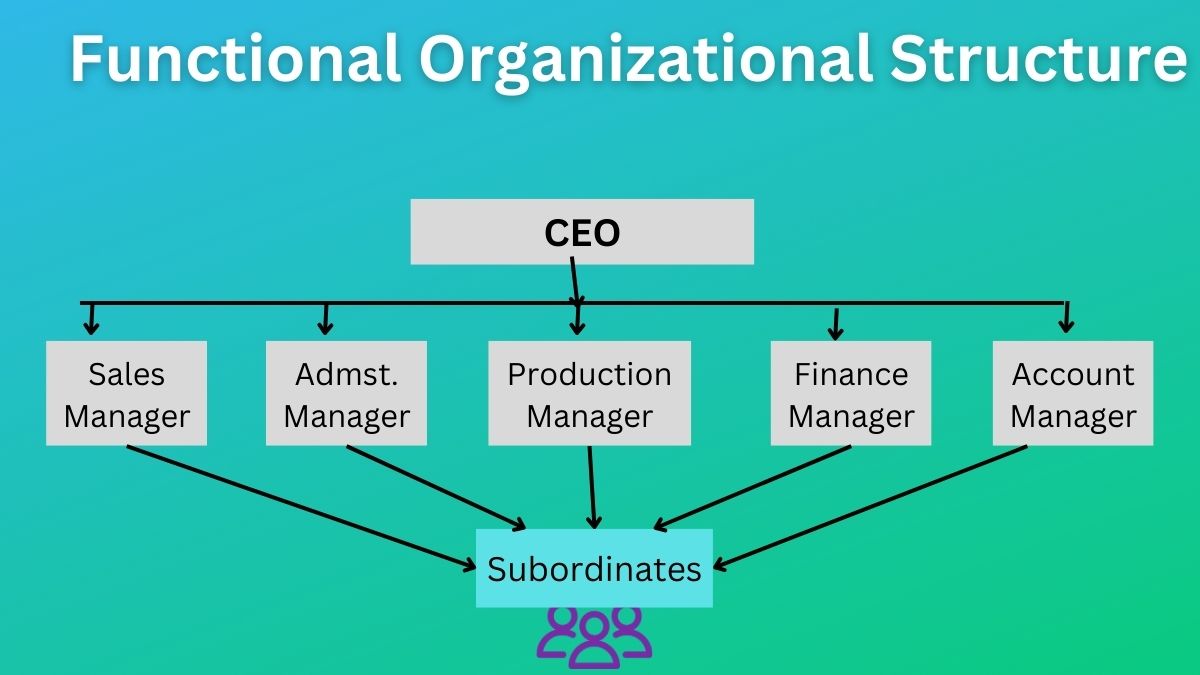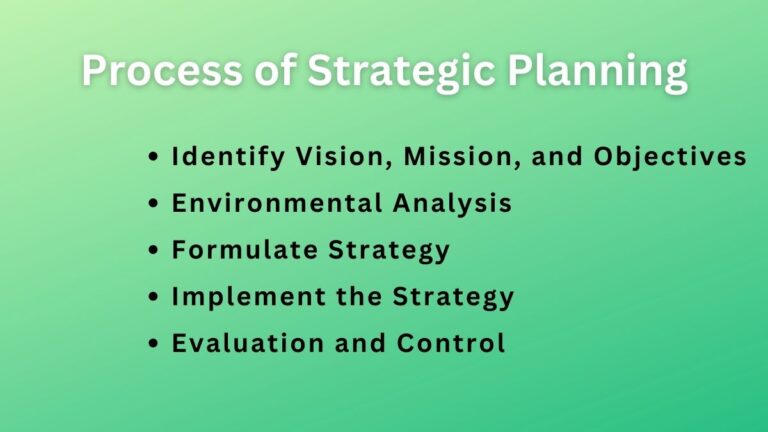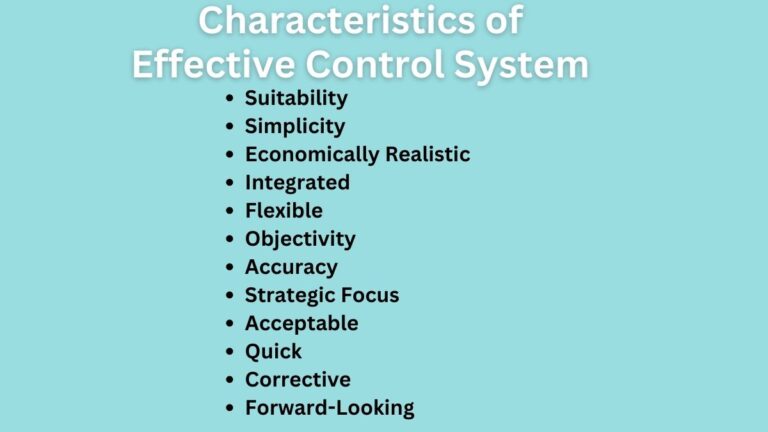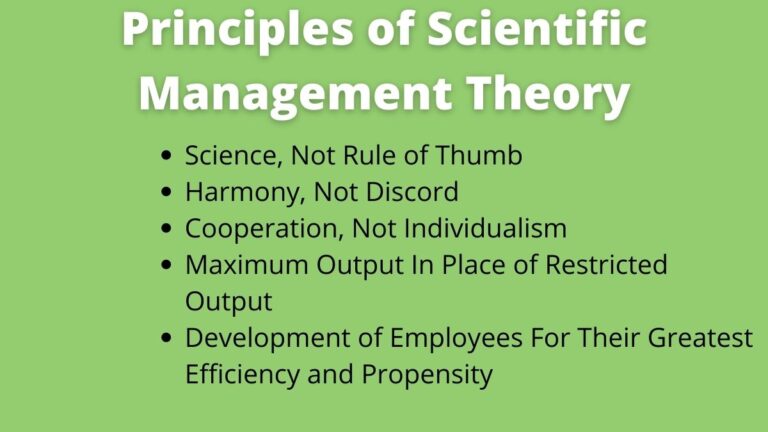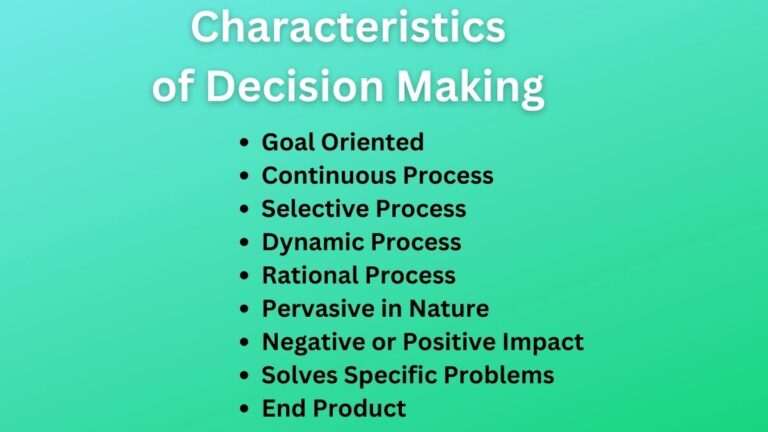What is Functional Organizational Structure? Definition, Features, and Pros/Cons
What is Functional Organizational Structure?
Functional organizational structure is a structure in which an organization’s task is divided into different departments based on the type of work, employee skills, and expertise. It includes the creation of different functional departments in the organization.
Similar nature tasks are grouped into one department and other types are in the next department such departments may include marketing, production, sales, finance, account, HR, etc. For each functional department, a department head is appointed, also called a functional specialist. The functional specialist is given the necessary authority to direct the employees working with him and to efficiently carry out the tasks.
The idea behind the functional structure is of F.W. Taylor, who is called the father of scientific management. He developed this organizational structure for large organizations, especially for factories. In this idea, he has given more emphasis on specialization.
According to Tayor, each person is not specialized in different subjects. Therefore, he is in the position that activities should be divided into groups, and to handle the activities, the experts are to be given rights.
Characteristics of Functional Organizational Structure
The following features can be found in the organization which follows the functional structure.
- The whole task of the organization is divided into small groups.
- Each subordinate receives different instructions from different bosses.
- In this structure, the top managers are relieved from the workload.
- Flexibility can be exercised.
- It helps in mass production.
- Used for the principle of specialization.
- Useful for large organizations involved in various functions to be carried out.
- It is an expensive organizational structure as many functional managers need to be appointed with high remuneration and benefits.
- Decision-making can be delayed.
Related: Line & Staff Organizational Structure
Advantages of Functional Organizational Structure
When the functional structure is put into practice, it can provide various benefits to the organization. Some pros of the functional structure are mentioned below:
Benefits of Specialization
An organization that exercises the functional structure will enjoy the benefits of specialization. In this structure, the employees as well as functional specialists are assigned tasks based on their skills, experience, and expertise. They are required to do only jobs specific to their capability which let them become specialized in their field.
Increased Efficiency
Creating different departments for different functions also ensures efficiency in organizational operations. Each functional department is under the supervision of a specific functional specialist.
Top officials do also consult with functional specialists while making important decisions. This ensures the right decisions and enhanced working efficiency for managers and employees.
Reduced Workload
Functional structure is not like the line organizational structure in which the manager is overburdened with the workloads. Here, in a functional organization, the manager’s task is divided into different departments. In addition, the manager has enough time to think about creative functions and look at strategic areas of business.
Facilitates Growth
The functional structure makes it easier for corporate operations to develop and grow. It opens up opportunities for both the expansion of current business lines and for the volume of business to increase.
Every functional manager is an expert in their respective field. The managers are capable of managing their business effectively and in line with specifications. All of these promote the expansion of businesses.
Suitable for the Present Business Environment
The functional organizational structure is suitable for large business organizations in a recent business environment. It increases functional specialization which leads to improvement in the quality of products and services. This ensures the successful operations of the business.
Disadvantages of Functional Organizational Structure
Despite many pros, the functional organization also has many cons. Some disadvantages are mentioned below:
Lack of Unity of Command
Unity of command suggests that an organization should have the practice in which an employee should get orders from and report to only one manager at a time.
However, in a functional organization, an employee has to receive orders from and report to many managers at a time. This creates confusion for the employee about who should he report to first, which manager should he prioritize, etc.
High Administrative Cost
Functional structure is one of the expensive organizational structures. Because of its expensiveness, the functional structure is not applicable in small-scale organizations.
Related: Administrative Management Theory
In this structure, the business has to appoint functional specialists who require more pay remuneration and service than other managers. Which increases organizational costs.
Delay in Decision Making
Due to the complexity and dynamism of the business environment, a quick decision is essential nowadays. Unfortunately, the quick decision is not facilitated by the functional structure.
In a functional structure, before coming to any decision top manager has to discuss and consult with functional specialists which increases the time to make decisions.
Lack of Coordination
In a functional organization, every department of an organization is entrusted to functional specialists with the necessary authority and responsibility. They are more focused on the completion of their own departmental tasks. They lack the importance of other functional specialists and lack mutual understanding between other functional specialists and subordinates. This may result in a lack of coordination.
Read Next: Line Organizational Structure
Sajan Kushmi is a content writer with more than 4 years of experience. He holds BIM Degree. He write on the topics related to Management, Marketing, and Entrepreneurship.
